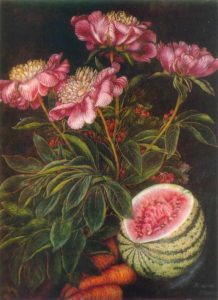How are some writers able to create a breathtaking, evocative setting or description that stays with you long afterwards? And why is this so difficult to replicate in your own work?
You’re a writer, so you know the feeling of staring at your computer screen, wanting the words to be powerful, create a vivid scene in the reader’s head, evoke an emotion. Instead, they feel shallow. They’re setting out, but not quite arriving at the intended destination.
There are several reasons why this might be, but let’s start with one of the most overlooked—linguistic clichés. Everyone knows about plot clichés, but they also creep into individual sentences. These are stock phrases or metaphors that serve as shorthand to communicate an idea, for example, a “bull in a china shop,” “let’s touch base,” “she lost track of time,” or “the writing’s on the wall.”
When an idea feels comfortable and familiar, it’s also forgettable. Associating blue eyes with the sky or the ocean, for example, or an emotionally distant character with ice or cold. Wishing the ground would open up and swallow you. And certain sayings, such as ‘love is like a red, red rose,’ might even be a pain point for the reader, causing annoyance.
On the other hand, sometimes clichés can be useful. When used with purpose, they can establish the cultural setting or a particular character’s mannerisms.
Clichés themselves are neither good nor bad—they’re just another tool in the kit. Sometimes, it’s appropriate to use a shortcut. It conveys meaning efficiently, and when the prose itself isn’t terribly important, that’s fine. However, more work leads to greater reward.
The key to being memorable is being unique, but it’s easy to say ‘be unique’ and harder to implement. Before we delve into that, it’s important to understand when and why to do this.
Much of it comes down to your prose style. Perhaps you consider your prose to be a vehicle to deliver plot. You want it to be technically competent but largely unnoticed in the background as your reader flies through the pages, coursing through character arcs and plot twists. There are advantages to this style—the prose is accessible and appealing to a large audience. There are many skilled, successful writers who write this way. In this case, as long as the clichés aren’t painful or densely crowded, they’re likely to whizz past as they’re meant to do, without being noticed. This is both the advantage and the danger of this style; it is unremarkable. If not compensated for adequately with plot and character, it may be passed over by agents or fail to pull readers back for more.
On the other end of the spectrum, there are writers who consider every cliché in their work a missed opportunity for greatness. They craft every sentence with painstaking care, building every image to the sky. For a successful example, I’d recommend Catherynne Valente. It’s worth noting that Valente started out writing poetry, and uses her poetry background in her prose work.
The dangers of this style are not insignificant. It could lead to overwrought prose, especially in a long-form work such as a novel. You risk your writing losing accessibility, and thus commercial reward. There’s also the danger of wasting time—more work takes more time, and if you end up scrapping the scene or restructuring the story, those perfect sentences and the time that went into them are lost. We’ll discuss how to avoid this in a future post on the writing process. Rest assured, there’s a sensible way.
Most writers (and readers) will find that their sweet spot falls in the middle of these two extremes. Balance is important. For most of the piece, it is perfectly acceptable and even advantageous to write in a more accessible style. However, you might wish to polish areas of high emotional intensity or important description, to put a little sparkle on the manuscript.
There’s more to crafting an image than just replacing clichés in your prose. For one thing, there remains the question of what to replace them with? For detailed advice, please refer to the second post in this series, Crafting a Literary Image: Literary Techniques to Evoke Mood (Part Two). As a teaser, I would like to highlight “Watermelon, Carrots, Flowers” by Kateryna Bilokur in 1951, as an example of what I mean by a unique image.

Watermelon and carrots paired with flowers is not a natural pairing, and yet they all fit together. The reason why this painting stood out, among hundreds of still lifes that I’ve seen, is precisely because it is not the first thing that springs to mind. It has a sense of whimsy and humor in the idea, shapes, and color choices. This still life has a personality, it evokes a mood. So too can your literary image.
Further Reading: I’d like to point out one of Catherynne Valente’s poems as an example of strong imagery. Fiction writers have a lot to learn from poets in terms of imagery and style, and she also writes fiction. You might find the comparison of her poem and short story interesting.
What the Dragon Said: A Love Story
Exercise: Open up an old piece of your writing, preferably something that’s been polished and finished. Go through and look for linguistic clichés. You’ve certainly heard these phrases elsewhere, in other books or conversations. Highlight or bold the text without altering it. Consider the density of these phrases in your writing. Each instance is a chance to do something unique instead. You may not wish to change them all. But it’s good to be aware of how often you’re using shortcuts, and in scenes of particular importance, to take a little more care with your prose.
In the interest of fairness, I will do the same myself. Glancing over my post, I found several instances of linguistic clichés, bolded above.